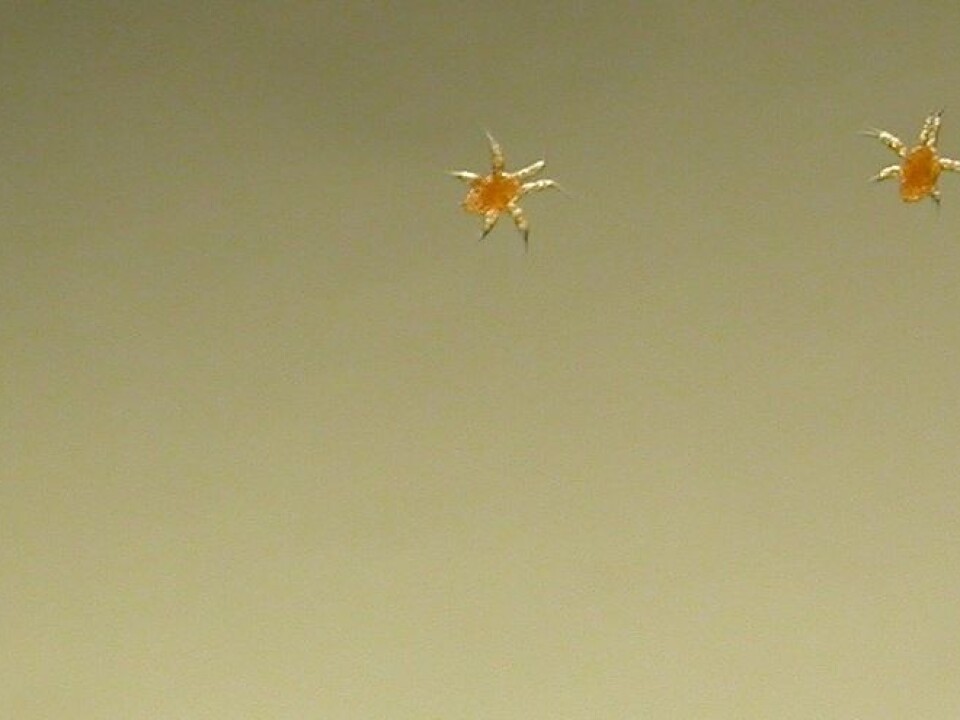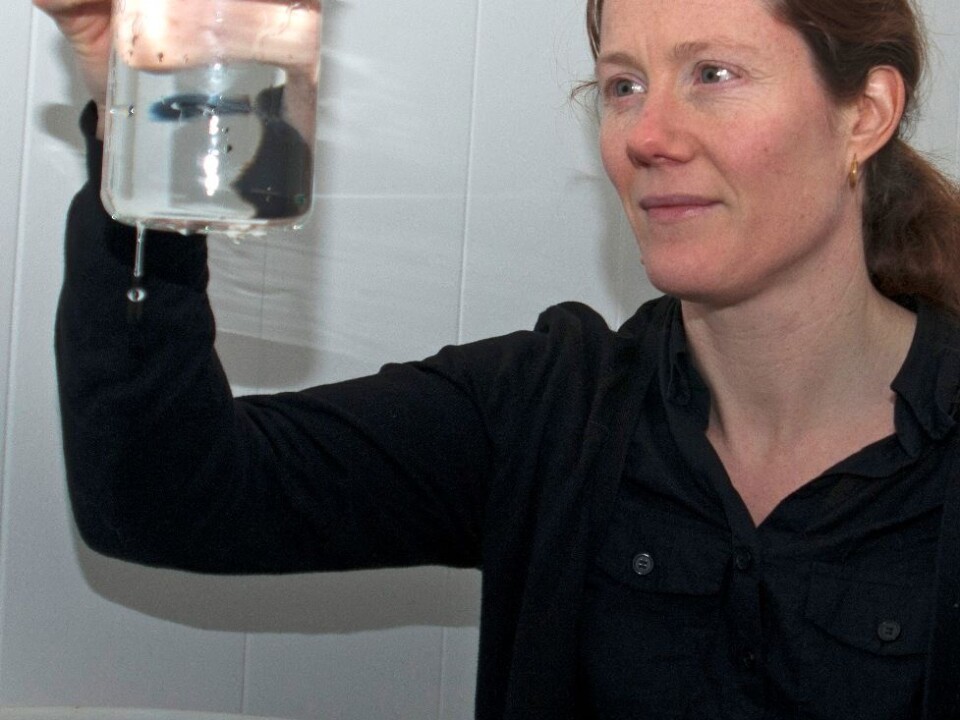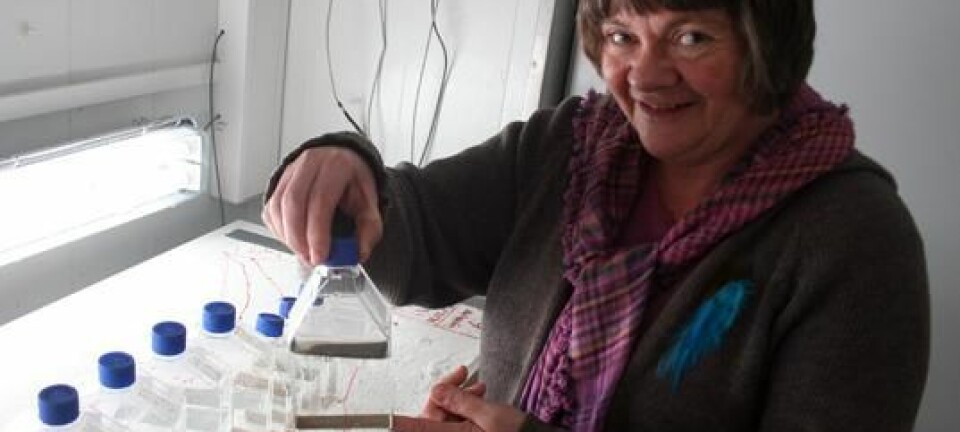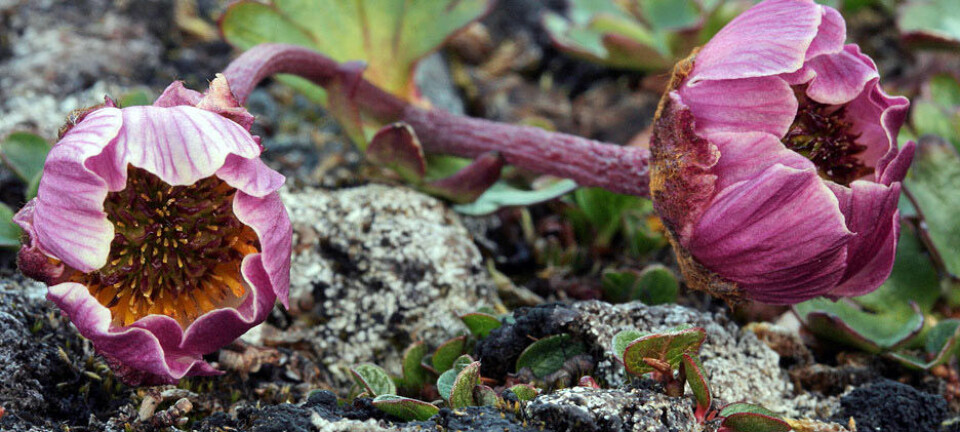
Tiny polar creature must deal with competition
Calinoid copepods are tiny creatures of vital importance to the northern polar marine ecosystem. If temperatures in the Arctic Ocean rise, the balance between the species may change.
Denne artikkelen er over ti år gammel og kan inneholde utdatert informasjon.
The notion about Arctic organisms shutting down during winter has been taken for granted until some tiny copepods proved differently.
“We don’t know so much about life up there in the Arctic waters during winter because our research voyages are conducted during the summer season,” says Elisabeth Halvorsen, a marine system ecologist at the University of Tromsø.
A year-round monitoring station on Svalbard made some observations that caught the attention of scientists. Certain activities were continuing during long Arctic night.
This motivated Halvorsen to join in on the research voyage “The Polar Night Cruise” in January this year. It’s rare for researchers to visit distant arctic regions at that time of year.

“We were lucky. The extreme storms dubbed “Dagmar” and “Berit” kept the sea from icing over fairly far north,” says Halvorsen.
She found that it was far from all peace and quiet and hibernation up there.
“On the contrary, we witnessed a great deal of activity. The object of my studies, the copepod Calanus hyperboreus, was already in spring vigour in January.”
Hyperboreus was rather hyper
C. hyperboreus is the largest of three species of the calinus genus of copepods found in Arctic waters. But it isn’t big, only four or five millimetres long.

Despite its modest size, the C. hyperboreus is a vital source of food for fish and seabirds. It is most predominant in the Greenland Sea and the Arctic Ocean.
Elisabeth Halvorsen researches the ways these tiny creatures adapt to the short summer season in the Arctic.
Why does it migrate?
Prior to the polar expedition she had a general idea of the habits of this little crustacean. In the spring and summer it rises to the surface of the ocean where it eats and grows, before sinking back down to the seabed in the fall.
This descent to the bottom of the sea can amount to several thousand metres.

It is not known what mechanisms get the little creature to migrate up and down such deep columns of ocean water in this way.
Fatty acids might have something to do with it.
C. Hyperboreus feeds on plant plankton. These are converted into fatty acids within the copepod and have the dual function of storing energy and regulating the little critter’s buoyancy.
Halvorsen is particularly interested in the fatty acids in their eggs, to find out whether these provide sufficient buoyancy to make them surface at the right time.
Active in winther
She was surprised to find hyperboreus to be so active in January.
Many of them had reached sexual maturity much earlier than the scientist had expected and they were found all the way from the seabed to the surface, rather than only on the bottom as she had expected in mid-winter.
Now in tubs and jars
Halvorsen brought a 100 C. Hyperboreus back to Tromsø with her in January. She has them in refrigerated rooms, in jars and tubs in the laboratory of the Department of Arctic and Marine Biology. At the end of March, 60 creatures are still alive.
Now she has studied egg production and seen the percentage of the eggs that are viable. Much is still unknown about these tiny crustaceans, despite the crucial role they play in the ecosystem of the High North.
“The C. hyperboreus is vital to the balance of energy in the sea,” explains Halvorsen.
The critter is an essential link in the food chain. It grazes on algae and is eaten in turn by seabirds and fish. In addition its remains – waste products and dead individuals – serve as food for bottom organisms such as sea urchins, king crabs and various bivalves.
Flexible, but threatened
There are three types of calinoid copepods in the north: Calanus hyperboreus, Calanus finmarchicus and Calanus glacialis. They differ in their adaptability and lifestyles. Mainly they all eat free-floating algae in the water column after the Arctic ice pack melts on the surface and sunlight allows photosynthesis.
The time of spring melt in the Arctic Ocean can vary widely. It can occur in April or not until June. The copepods have to tackle both scenarios.
The solution for the two Arctic species, C. hyperboreus and C. glacialis, is to eat ice algae that form under the ice pack, while waiting for it to melt. This gives them an advantage on C. finmarchicus.
The two Arctic copepods are also capable of producing offspring based on their stored energy alone, whereas their cousin C. finmarchicus has to get food in before it can get it eggs out. But C. finmarchicus has the advantage of growing more quickly at higher temperatures than the other two.
C. Finmarchicus makes headway
Halvorsen believes studies of hyperboreus are important for a number of reasons. One of them is the possibility of a warmer climate.
“If the temperature rises, the distribution of the three species will change, and C. finmarchicus could replace the two other species,” explains Halvorsen.
This has big implications for fish and seabirds that feed on them, because the two Arctic species are much larger and fatter than C. finmarchicus.
The copepod C. finmarchicus normally inhabits the Atlantic Ocean, the Norwegian Sea and the fjords, whereas hyperboreus is a deep water and polar species.
“One of the things we want to find out is whether C. hyperboreus and C. glacialis can adapt when the sea gets warmer,” says Halvorsen. “If it doesn’t, C. finmarchicus will take over. But when will these two lose out? Temperatures are probably not the only factor, others could also have an impact on the life phases of these copepods.”
Mysteries unsolved
C. hyperboreus still hides lots of secrets from Halvorsen:
“How can a four-millimetre-long crustacean wander up and down depths of several thousand metres, stay at the bottom of the ocean for months, reproduce and then migrate back to the surface again in the spring?”
The surviving, unnamed but numbered little sea creatures in the tubs of her lab will help her solve the mystery.
Except for number 26.
“I had to take that one out of production because she discovered that her own eggs were delicacies,” says Elisabeth Halvorsen.
-----------------------
Read this article in Norwegian at forskning.no
Translated by: Glenn Ostling
External links
- Elisabeth Halvorsen's home page at the University of Tromsø
- Arctic Tipping Points, a EU research project


































